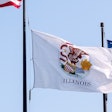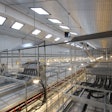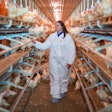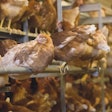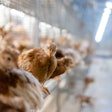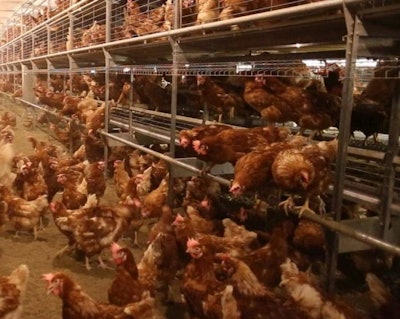
One of the nation’s leading certifiers of cage-free operations won’t certify any type of cage-free housing that includes a closing door.
In an interview, Adele Douglass, CEO and founder of Humane Farm Animal Care (HFAC), said the Virginia-based animal welfare group can’t certify any housing system with a door that closes – including aviary systems with closing doors and combination or “combi” systems – because there is no assurance the doors won’t be closed as soon as welfare auditors aren’t on site.
“What they are doing is they are not having a cage-free system, they are having a giant cage,” Douglass said. Farmers "are going to be wasting their money because the public is going to see it as one giant cage.”
The American Humane Association (AHA), an animal welfare group that also offers third-party auditing of livestock conditions, doesn’t share that position.
“The implication of what some other groups are saying is that the presence of or even temporary use of a door is less than humane,” Mark Stubis, a spokesman for the AHA, said in an email. “The science on that has not been established one way or the other.”
The importance of certification
Growing demand from major food companies and grocers in North America – McDonalds Corp., Grupo Bimbo S.A. de C.V., General Mills Inc. and most recently Wal-Mart Stores Inc. – is pressuring the egg industry to rapidly adopt new cage-free housing systems to meet their customers’ cage-free purchase pledge timelines. As the industry pivots in the coming years, the opinions of animal welfare auditing agencies like HFAC will play a large role in which systems egg producers will ultimately purchase and install.
Because the United States does not have a national law dictating how a cage-free operation should be outfitted, producers and retailers are turning to third-party programs, like HFAC’s Certified Humane and the AHA’s Humane Heartland – identified as American Humane Certified on its certification seal – for guidance on cage-free husbandry.
While equipment companies are still rolling out new equipment, several early entries for cage-free housing – some aviary systems and all combination or “combi” systems - have deployed doors that close. This is either to allow farmers to secure hens inside the housing system when first brought over from the pullet house and overnight when in full lay, or to serve as a hedge in case cage-free doesn’t turn out to be the future of the industry.
Both organizations commission scientific committees to determine how best to provide for the welfare of farm animals. Stubis said the AHA is a science-based organization and it needs an “objective” reason for endorsing any criteria involving the welfare of animals, including whether doors should be allowed on cage-free systems.
“Sometimes what sounds good to an uninformed consumer may not actually be best for the animals,” Stubis said. “That is why it is important to look into each feature of housing and conditions thoughtfully.”
Open for debate
The AHA’s cage-free guidelines indicate the issue is still open to future debate. Its audit documentation said the group’s scientific advisory committee is “taking into consideration” the issue of whether and for what period of time hens can be temporarily confined to their cages.
Producers looking for guidance on cage-free can also look to the United Egg Producers’ (UEP) husbandry guidelines. The UEP has established guidelines for cage-free housing and management, but it has said it will not take a position on any specific type of cage-free housing system – including those with and without closing doors.
In an e-mail, UEP President Chad Gregory said its board of directors has approved the following official position: “UEP already has cage-free certified guidelines, and the system used to meet those guidelines is a matter between the farmer and their customer.”
Gregory said it is possible that the UEP board will reconsider the issue at a later date.










